SLV Reflector LED spots
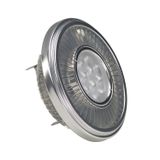
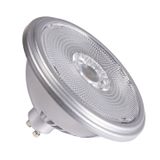
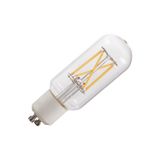
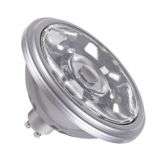

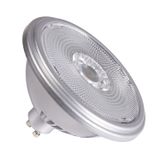
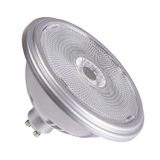
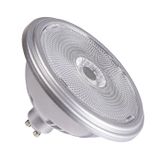
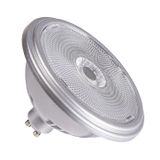
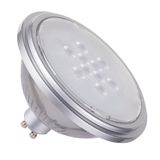
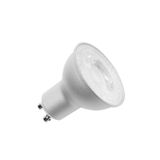
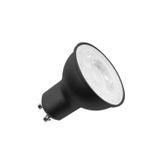


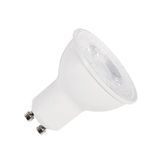
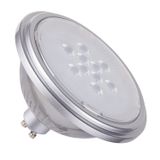



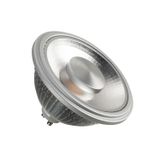
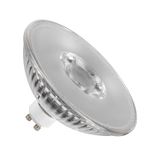
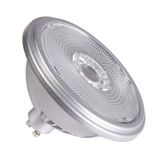


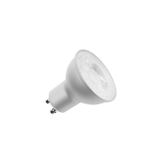
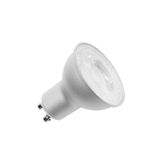
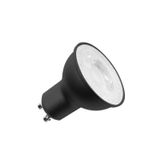

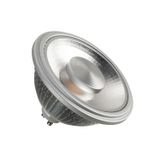
slv reflector led spots range and application context
SLV reflector spots are the workhorse choice when a tight, controllable beam has to land cleanly on merchandise walls, tables, or exhibits. Output classes typically span ~400–1 500 lm with common beams 10° / 15° / 24° / 36° / 60°. Color options: 2700 K, 3000 K, 3500 K, 4000 K, 6500 K; CRI 80 for back-of-house and CRI 90/95 (R9 > 50 available on selected lines) where color quality drives sales. Binning ≤3 SDCM keeps long ceiling runs visually consistent across aisles and corridors.
slv led reflector lamps families and form factors
The portfolio covers GU10 mains, G53/AR111 high-punch variants, and MR16/GU5.3 low-voltage types for legacy housings. Glass-body GU10s suit visible fixtures; polymer-and-aluminum thermally managed bodies ride cooler in enclosed cans. AR111 versions offer higher peak intensity for throw distances of 3–8 m, with precise faceting for a defined cutoff. Short-neck options address shallow cans; warm-dimming SKUs support hospitality scenes where the CCT tracks down as the level drops.
Technical specifications and standards
Mains models operate 220–240 V, 50/60 Hz with PF typically ≥0.90 and THD in the 10–15 % band. Low-voltage lamps run at 12 V and require compatible electronic transformers; check minimum VA to avoid no-start or shimmer. Lumen maintenance is underpinned by LM-80 source data with TM-21 projections; expect L70/L80 at 25–50k h when Ta and Tc are respected. Flicker performance can meet office norms (PstLM ≤ 1.0, SVM ≤ 0.4) on the specified families. Operating window is commonly −20…+40 °C; keep insulation clear of the Tc point. Compliance aligns with IEC/EN 62560 for self-ballasted lamps and EMC via EN 55015/EN 61547; photometry is provided in IES/LDT per CCT and beam.
slv indoor reflector spotlights optical control and glare
Faceted reflectors deliver familiar halogen-style punch with soft edge fall-off, while hybrid TIR/reflector systems tighten center intensity for long throws. For retail mannequins or focal shelves, 10–15° lifts contrast; 24–36° suits dining tables and gallery plinths; 60° handles general wash where ceiling density is limited. In offices, select recessed emitters or micro-baffles to keep UGR civil near screens.
Applications and compatibility
Fashion and cosmetics benefit from 3000–3500 K with CRI 90+ and high R9 to hold reds and skin tones. Restaurants lean toward 2700–3000 K and mid beams to avoid glare at seated eye level. Museums specify low flicker and tight CCT tolerances; document peak candela and distance-to-object when conservation rules apply. When schedules mention slv spotlight reflectors without more detail, lock socket, beam, CCT/CRI, dimming family, and thermal space before freezing substitutions. For window vitrines or tall atria, call up slv high intensity spot lamps to maintain punch at distance.
slv directional led reflectors control methods and wiring
For compact retrofits, trailing-edge dimmers deliver quieter acoustics and better low-level stability than leading-edge types. Larger grids should push control upstream: DALI-2 DT6 drivers (for MR16 or modular heads) synchronize scenes and define a minimum stable percent for cleaners. Publish inrush and channel counts on the panel schedule; even integrated lamps benefit from this discipline. Where very tight aiming ratios are specified, note the scene as slv focused beam lighting in the control narrative so commissioning targets are unambiguous.
Integration with other SLV products
Reflector lamps drop into SLV fixed and gimbal downlights, track heads with GU10/G53 holders, and selected pendants that use reflector sources. For clean ceilings, pair with SLV frames to restore bezel control on irregular cut-outs. Combine accents with SLV light ribbon hose strip for perimeter wash on the same protocol. Legacy MR16 circuits should be matched with SLV controlgear where minimum-load behavior is documented; mains GU10 runs remain transformer-free for simpler maintenance.
Selection criteria for B2B clients
Start from the visual brief: target lux and contrast ratio, then pick beam and CCT/CRI. Validate thermal room in cans; if Tc margin is tight, choose a lower-watt node or a vented trim. Keep each circuit homogeneous in lamp type and wattage to stabilize dimming. Confirm transformer compatibility on 12 V runs and respect maximum cable length/capacitance on remote gear. For mixed ceiling heights, standardize two lumen nodes per floor so illuminance holds without deep dimming.
Advantages of working with Bankoflamps
You receive individual B2B pricing and a named account manager who maps sockets, beams, lumen nodes, frames, and control method to your room data sheets and reflected ceiling plans. The portal shows live EU stock by warehouse; quotes typically return in about an hour with EAN/MPN, photometry, Tc limits, PF/THD, inrush, and mounting notes so coordination stays tight. Orders go in by manufacturer code, with downloadable, always-current price lists and validity windows. We track lead times and order status, provide purchase-history analytics, and extend post-payment up to 30 days for trusted clients. Shipments are consolidated by line and zone to reduce site sorting and freight, and we support roll-outs in France, the Baltics, Germany, Spain, Italy, Belgium, and the Netherlands.